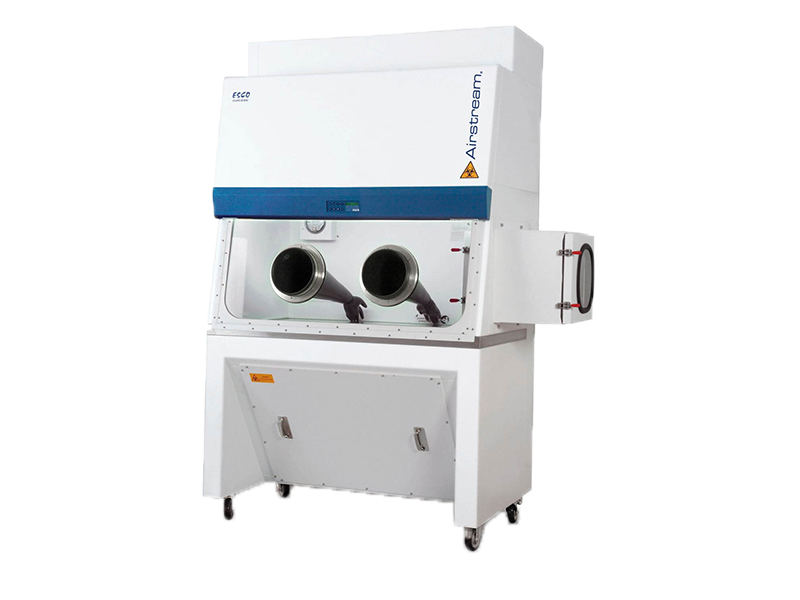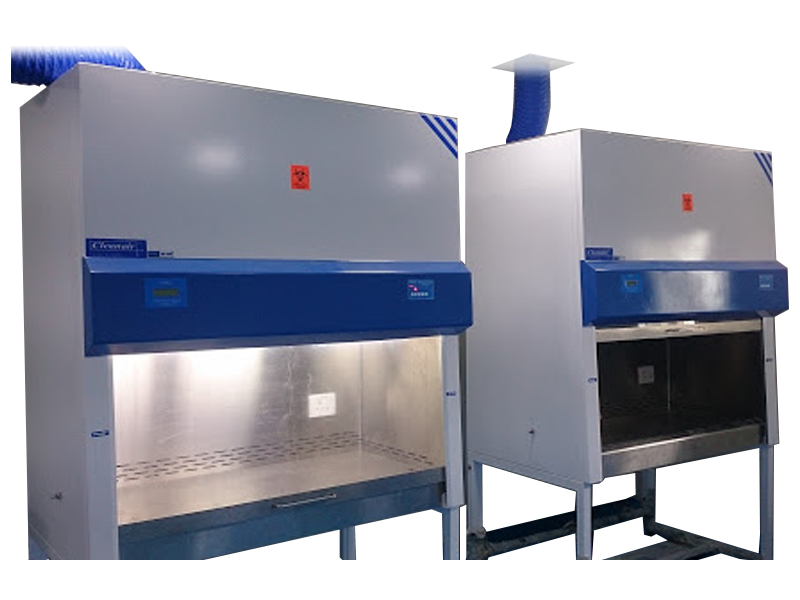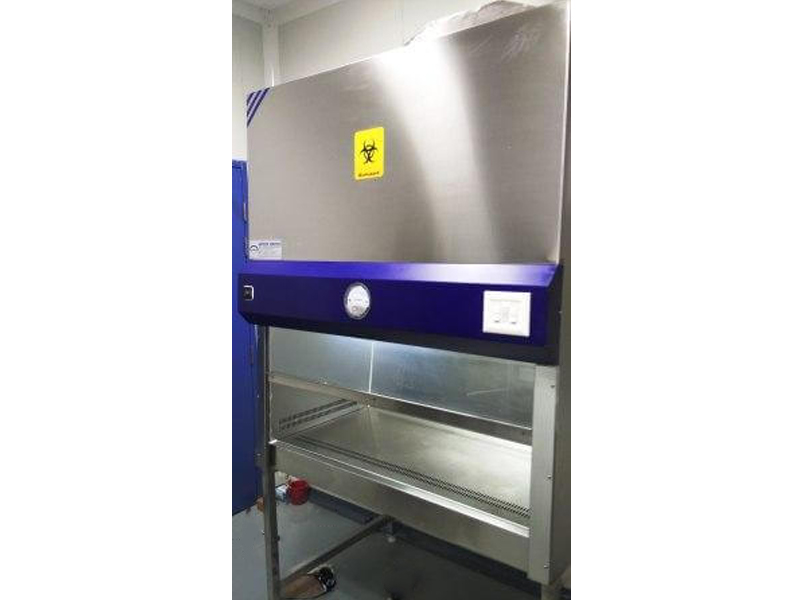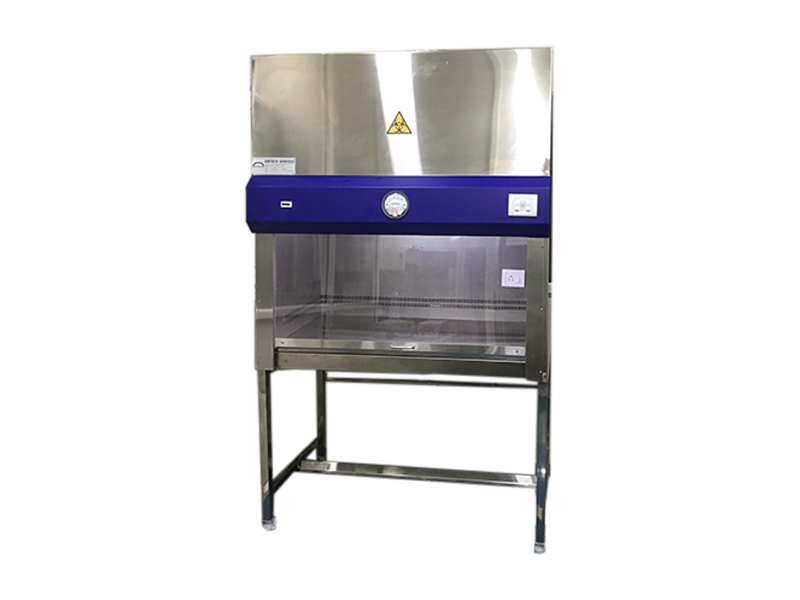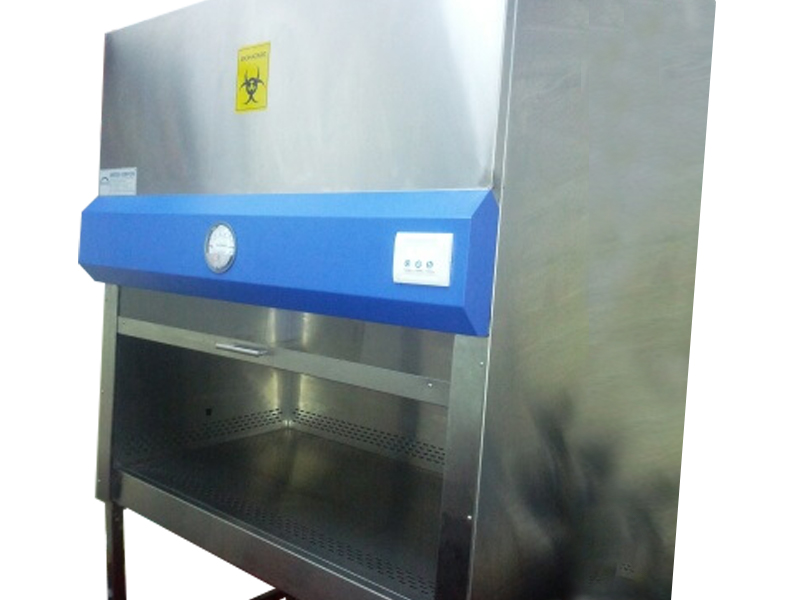Bio-safety cabinets are available in Stainless steel and GI with PU coated construction. Worktables are of removable type and suitable for oven baking. Inner surface are completely line with stainless steel. HEPA filters are of Minipleate type. Differential pressure is monitored through specially designed low-pressure gauges. Working chamber is provided with UV & Illumination tubes. Feather-touch control switch with indicators are provided for the operations of blower / illumination / UV Bio-safety cabinets are available with various optional Special features such as VFD controlled air-blowers for adjustable airflow, Operation of UV integrated with the front-door movement to avoid accidental exposure to UV rays, warning alarm when differential pressure exceeds the limit to indicate filter choking level, warning alarm when the front sash is opened beyond safety-level Bio-safety cabinets are available in various standard sizes and custom-built sizes to suit user’s requirement
Bio Safety Cabinets
Bio Safety Cabinet Class - IBio Safety Cabinet Class - I
Recommended for personnel & Environmental protection only
Class I Bio Safety Cabinet is defined as a totally enclosed, ventilated unit of airtight constructions. The front panel can be opened, allowing room air to enter the cabinet, sweep the inner surfaces, and exhaust-out through the duct.A front sash with glove ports may be installed. If glove are installed, air is drawn through a secondary opening equipped with a primary filter. A laboratory hood could be considered a class I BSC, the exhausted air is passed through HEPA filter before released in to the atmosphere. The Cabinet unit is maintained under negative pressure.
| Cleanliness | Class 5 as per ISO 14644 -1 |
| Air Balancing | 100% exhaust with exhaust incineration |
| Particle Retention | 0.3 Micron |
Bio Hazard Safety Cabinet - Class II
Recommended for Product, Personnel & Environmental protection
Class II Cabinets differ in the proportion of air re-circulated within the cabinet; velocity of airflow to the work zone; where the exhausted air is discharged. Air barrier at the work opening and the contaminated air plenum is under positive pressure. An air barrier between the operator and the work zone is maintained by a flow of room air into a full width grille in the work opening. The barrier air mixes with the laminar flow air in a sump underneath the work surface, and is exhausted to the outside environment through duct via a HEPA
| Cleanliness | Class 5 as per ISO 14644 -1 |
| Air Balancing | 70% re-circulation & 30% exhaust |
| Particle Retention | 0.3 Micron & above |
Bio Hazard Safety Cabinet - Class II
Recommended for Product & Personnel protection
Class II A/B differs in the proportion of air exhausted and re-circulated within the cabinet; velocity of airflow to the work zone creates an ultra-clean environment for product protection. An air barrier between the operator and the work zone is maintained by a flow of room air into a full width grille in the work opening. The barrier air mixes with the laminar air in a sump underneath the work surface, and is re-circulated with in the cabinet through HEPA filter.
Class II A/B Biohazard Safety Cabinets are not recommended for use with gases or vapors. A primary application is for sterile packaging. Care is required while decontaminating the cabinet.
| Cleanliness | Class 5 as per ISO 14644 -1 |
| Air Balancing | 100% re-circulation |
| Particle Retention | 0.3 Micron & above |
Bio Hazard Safety Cabinet : Class - II Type B1
Recommended for Product, Personnel & Environmental protection
In Class II-B1 Cabinets 30% of air re-circulated within the cabinet and the remainder exhausted outside the laboratory through optional exhaust air incinerator for environmental protection. Velocity of airflow to the work zone creates an ultra-clean environment for product protection.
Maintains a minimum measured average inflow velocity of 75 fpm through the work area access opening. The face velocity at the access opening varies between 80 fpm and 100 fpm. Have HEPA filtered down flow air from a common plenum.
| Cleanliness | Class 5 as per ISO 14644 -1 |
| Air Balancing | 30% re-circulation and 70% exhaust |
| Particle Retention | 0.3 Micron & above |
Bio Hazard Safety Cabinet : Class - II TYPE B2
Recommended for Product, Personnel & Environmental protection
Class II Type B2 Bi cabinets are referred to as “total exhaust” cabinets because the 100% contaminated air is exhausted to the atmosphere after HEPA filtrations without re-circulating in the cabinet.
| Cleanliness | Class 5 as per ISO 14644 -1 |
| Air Balancing | 100% Exhaust with incinerations |
| Particle Retention | 0.3 Micron |
Bio Safety Cabinet - Class III
Recommended for Personnel and Environment protection
These cabinets are totally enclosed ventilated unit of airtight construction. Operations in the cabinet are conducted through glove-ports, which are provided with rubber gloves. The Cabinet unit is maintained under negative pressure. Supply air is drawn into the cabinet through HEPA filters. The exhaust air is treated by HEPA filtration and incinerations.This type of cabinet systems provides the means to control air borne particulates containments including micro – organisms determined to be potentially harmful to personnel the product and the environment. These cabinets provides high level of protection to the personnel and the environment
| Cleanliness | Class 5 as per ISO 14644 -1 |
| Air Balancing | 0% re-circulation & 100% exhaust |
| Particle Retention | 0.3 Micron |
